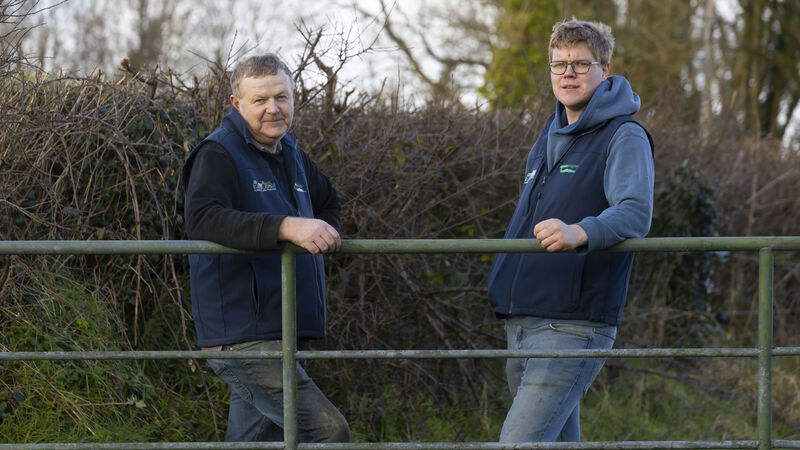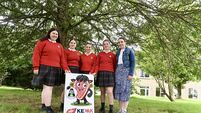Putting five-star bulls to the test for finishing performance in Youghal

Eamon and Donnchadh McCarthy on their farm at Carrigeen, Youghal, Co Waterford. Picture: Patrick Browne
As we move into October, it’s time to look back at the performance of the finishing stock to date and see what improvements we can make for the coming season. The bulls we choose for the autumn herd will be selected with two things in mind: improving both the maternal and terminal traits of the herd.
We always find it interesting to look back at the carcass performance of the finished stock and see what changes we can make to improve the performance of these animals going forward.
From spring 2024, young bulls that were finished this year, the difference in carcass performance is striking in terms of age of finish and carcass weight.
By reducing our age of finish, we will reduce our carbon footprint, and if carcass traits can be improved upon or maintained, we should increase our net margin from these animals.
The five-star animals were sired by terminal sires CH8571, CH7503, LM4217 and CH8535. The two-star animals were sired by the maternal sires used SA4604, SI4250 and SI2469.
As we breed our own replacements from within the herd, we have to select bulls suitable for both maternal and terminal traits. We will use enough maternal bulls to generate replacements, and the rest will be AI to high-terminal index Charolais and Limousin bulls.
The autumn calving herd finished calving on August 31. Calving went well, all cows calved down without any major difficulties, and the focus will now turn to getting these cows back in calf soon.
The breeding season for the autumn herd generally starts about October 10 to commence calving around July 20. The spring-born calves have now received their booster pneumonia vaccine and are being prepared for weaning.
Our grass growth this year to date is behind that of 2024. This time last year, we had a farm cover of over 950kg DM/ha, versus a cover of 792kg this year. Our grass growth up until the end of July was back by 1.8 tonnes of DM/ha, due mainly to a lack of rainfall.
At the moment, our stocking rate is 2.43 livestock units/ha, which is higher than last year at this time, when it was 1.99 livestock units/ha. We had to take out ground for a third cut of silage and we are also waiting for the 5.9ha of reseeds to come back into the rotation. We grew over 5.5 tonnes of grass in the period from August to the end of December last year.
The high levels of rainfall are making cattle unsettled at the moment, but the forecast is positive for the week ahead, with more settled conditions. The plan is to use the autumn planner to extend the grazing for as long as we can.
We will start closing paddocks from October 10 onwards, and plan to graze 60% of the farm in October. This grazed ground will provide the grass next spring when growth rates are too low to support demand.
- Eamon and his son Donnchadh are farming in Carrigeen, Glendine, Youghal, Co Waterford, and are part of the Teagasc Future Beef programme with the Signpost programme. They run a suckling-to-beef enterprise split into 60% spring and 40% autumn-calving, consisting of 55 suckler cows. The males are finished as under-16-month bull beef, while the heifers, not retained for breeding, are finished at 18-20 months. Their own heifers are kept for breeding.


